Juniper bonsai trees are a beautiful and rewarding plant to grow and care for. Whether you are brand new to bonsai or a seasoned vet, you can benefit from learning more about these trees. With the right amount of light and humidity, a bonsai can do well in nearly any condition; however, Juniper bonsais are best suited to outdoor growth.
Their growing season is year-round when grown outdoors. However, since bonsai requires a small tree, some people grow in them in containers, like a ceramic pot, and then trim, shape, and tend to them on a regular basis to get the results they want from their growth.
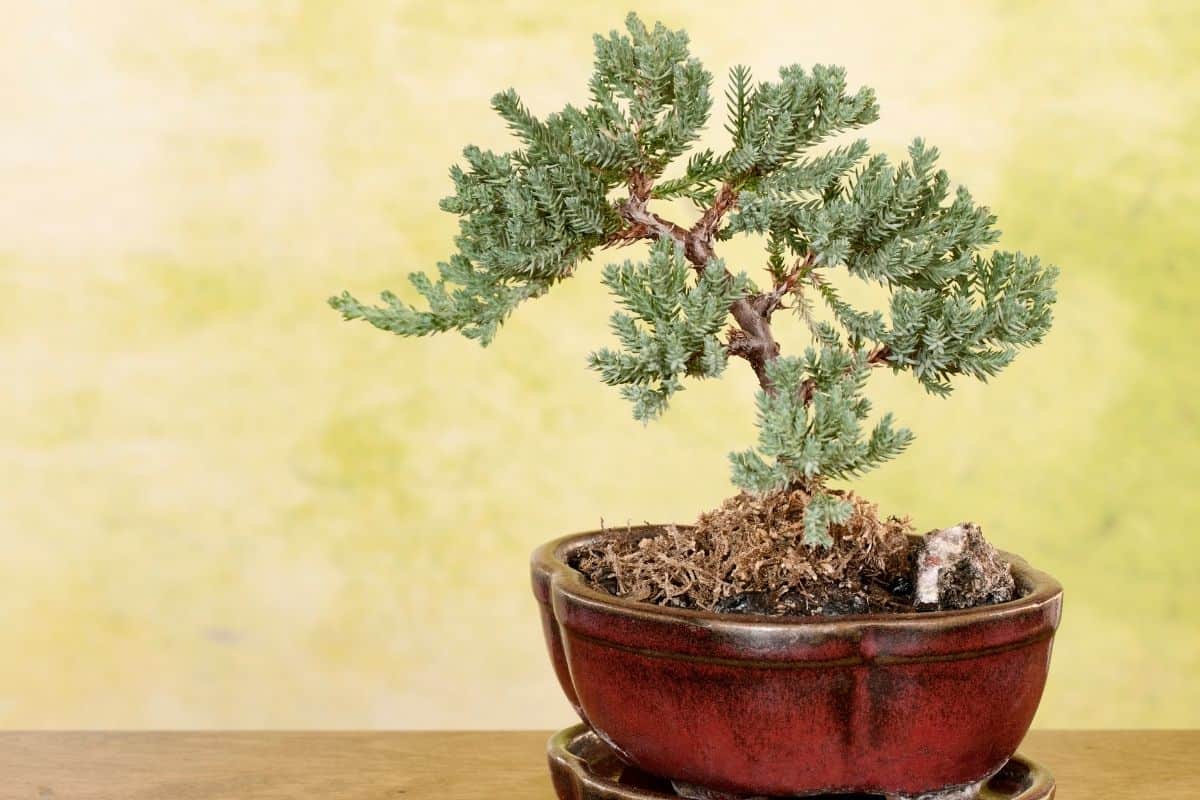
What Are Juniper Bonsai Trees?
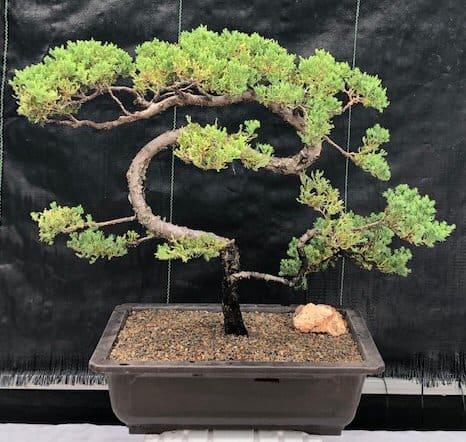
One of the most popular bonsai trees on the market, junipers can be kept indoors or outdoors (learn more about indoor bonsai trees). They are found in many countries all over the globe and there are more than fifty different varieties of them. Some of the most popular varieties people keep are the Needle Juniper and Chinese Juniper bonsai tree.
These are some of the easiest to care for, which is likely one main reason they are the most popular. They are a great first choice for someone new to caring for bonsai.
Juniper trees belong to the Cypress family of plants. This genus has between 50 and 70 different species within this family. They are evergreen coniferous trees or shrubs and make a popular choice for bonsai due to how they grow and how they can be shaped. They can have two different types of foliage – either needle-like foliage or scale-like foliage.
Let’s take a look at how you can care for your juniper bonsai trees.
What is bonsai?
Bonsai refers to the ancient Japanese art of growing ornamental mini or dwarfed trees in containers for the purpose of caring for them to mimic the shape and scale of full-sized trees. The word “Bon-sai” (often misspelled as bonzai or banzai) is a Japanese term that, literally translated, means “planted in a container”.
When these trees are planted in containers, it prevents them from getting as big as they would outdoors, but it makes them perfect for the act of bonsai gardening.
Some tree species lend themselves to this better than others, and that’s why we’re talking about junipers. They are a wonderful shape for working bonsai and they are easy to care for and typically, pretty hardy.
It’s essentially a miniature tree and people find it fun and relaxing to tend to it and watch it grow over the years. You can even prune it and shape it in order to have some control over how it grows and in what direction. For some highly experienced bonsai growers, it is even an art form.
How to Care for Juniper Bonsai Trees
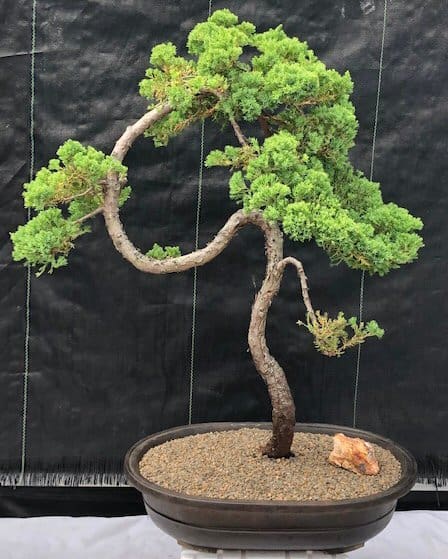
While junipers will grow large outside, growing them in containers lends itself to bonsai very well. In this case, they are usually 3-6 feet tall and 1-3 feet wide, or as desired since you can control this with bonsai techniques.
Proper Juniper bonsai care starts with knowing your species so that you can care for it accordingly. There’s the California juniper, the Japanese needle juniper, Japanese shimpaku (a dwarf Juniper), and more. Most of them will have similar care guidelines but knowing specifically what species you have will serve you well and give it the best chance of success.
In general, you want to grow your bonsai in an area that gets more than four hours of direct sunlight each day and the soil should be well-draining and slightly dry. Here is how you can care for your juniper bonsai.
Bonsai plants need a lot of sun, and if you live in a place with a cold winter season, you can bring it indoors for the winter months but it’s important that you keep it in a space that still gets full sun. Some afternoon shade is fine, but too much time without sun and your juniper is not going to do well.
Bonsai soil
What kind of soil does your juniper bonsai need? Use a commercially available bonsai soil mix for juniper trees for the best results (try this professional bonsai soil). These are well-draining, so they allow air and water to reach the plant’s roots, and they are usually made up of a combination of akadama (clay granulate from Japan), organic potting compost, pumice, and fine gravel or grit.
Juniper bonsai likes a neutral to acidic soil pH and learning to water properly is important.
Watering
Juniper bonsai trees like soil that is slightly dry, but it also should not be left too dry for too long. With proper drainage, you can water the plant well and then allow the soil to become dry before you water again.
Excess moisture can harm the plant, so you need to be sure excess water can be easily drained away and also that it doesn’t sit in the bottom of the pot.
You also want to give the proper level of humidity for this plant to do well. If you don’t live in a place with a humid climate naturally, you may need to supplement this by misting the leaves regularly with a spray bottle or using a humidity tray. Either method works well, or you can actually do both.
Feeding
For optimum growth and health, you can feed your bonsai a half-strength liquid fertilizer about once a month during the spring and fall seasons (I prefer this bonsai pro fertilizer). You don’t need to fertilize your juniper during the summer months. You also should avoid feeding right after the plant has been re-potted.
Pruning
When you need to prune your juniper tree, the best time to do so is in spring and summer. New shoots can be pinched back once they reach one inch in length, and you can continue to do this from spring until around mid-September.
Growing and Repotting
Juniper trees do best when grown outside and planted in the ground. However, they are also popularly grown in pots to be used for bonsai. Growing in containers can stunt their growth (which is why they are chosen for bonsai) so you may need to repot when the plant has grown too big for its current pot. If your bonsai is under 10 years old, you can repot every two years. If it’s over 10 years, you can repot every three to four years. When you repot, you can prune the roots carefully at this time as well.
You can use a special bonsai pot that is designed specifically for these plants and their roots and not only will it look nice, but it will have the features you need for your plant to thrive and have optimal growth.
Wiring
Some people like to use wiring to shape their bonsai trees and junipers do well for this. However, you should take special care when wiring, especially when cutting, so as not to damage the plant itself. Use special wire cutters and go slowly and meticulously.
In general, this is a plant that doesn’t like too much pampering. Overwatering and overfeeding are common causes of death in this bonsai plant. It lends itself better to slight neglect than other plants. Unlike many other bonsais, it doesn’t mind drying out a bit so if you forget to water, you don’t have to go and drench it the next day.
Make sure there is good, proper drainage or you will get root rot in your juniper bonsai, a common cause of plant death in this bonsai.
Benefits of the Juniper Bonsai Tree
What are some reasons people like to keep this tree? As said above, it is pretty easy to care for. It also has a nice shape and size for bonsai. Some reasons people enjoy bonsai in general are:
- can boost creativity
- are soothing and relaxing to work on
- have a calming effect when you look at them
- live for a very long time
- bring beauty to any space
- can help you establish healthy habits
- can help you reduce anxiety
- gives you room to experiment
- can give a sense of accomplishment
Bonsai tree care kits
If you are planning on growing and tending to bonsai trees like the juniper bonsai, it pays off to invest in a bonsai care kit. While other gardening tools you may already have will work, these kits are specifically designed with bonsai in mind and I love how easy they make it to trim, shape, or prune your tree when needed.
Here are some care kits you might consider:
Planters’ Choice Premium Bonsai Tool Kit + Bonsai 101 Book
This kit comes with basic tools like a rake, spades, pruning shears, and more. But it also comes with a great guide to Bonsai 101, which I think is especially helpful to those who are new to bonsai. This also makes a great gift if you know someone just getting into bonsai.
Bonsai Tools Set – 24 PCS Bonsai Tool Kit for Beginners
This is another beginner kit but it really has a TON of great things inside. From gloves and shears, and wires and more, you have everything you could ever need to get started in this kit. It all comes in a handy, portable bag to keep all of your bonsai tools together, too.
Bonsai Starter Trimming Care Kit for Beginners
This kit has the basic tools needed and also a repotting mat. It’s also very convenient and features all the basic tools you need to get started.
Trimming Tools Set
This 13-piece set has shears, wire, rakes, and other tools needed to care for your juniper bonsai and it also has a handy PU leather bag to keep all of your tools together. It’s a great choice for new bonsai gardeners or anyone who is in need of a new kit.
Care of Juniper Bonsai Trees – Conclusion
As you can see, caring for these plants can be a very rewarding experience. You can get strong growth when you care for your plant properly and these care tips will help you do that. The beautiful juniper bonsai tree is an excellent choice for anyone looking to get into bonsai or add to their existing collection.
They make the perfect introduction to the world of bonsai keeping and with proper care, your juniper can live for many years and bring you a great deal of enjoyment. As a general rule, care of bonsai starts with the right information and we hope this post has put you on the correct path.
What type of bonsai tree is your favorite? Will you use these tips to try your own juniper bonsai?
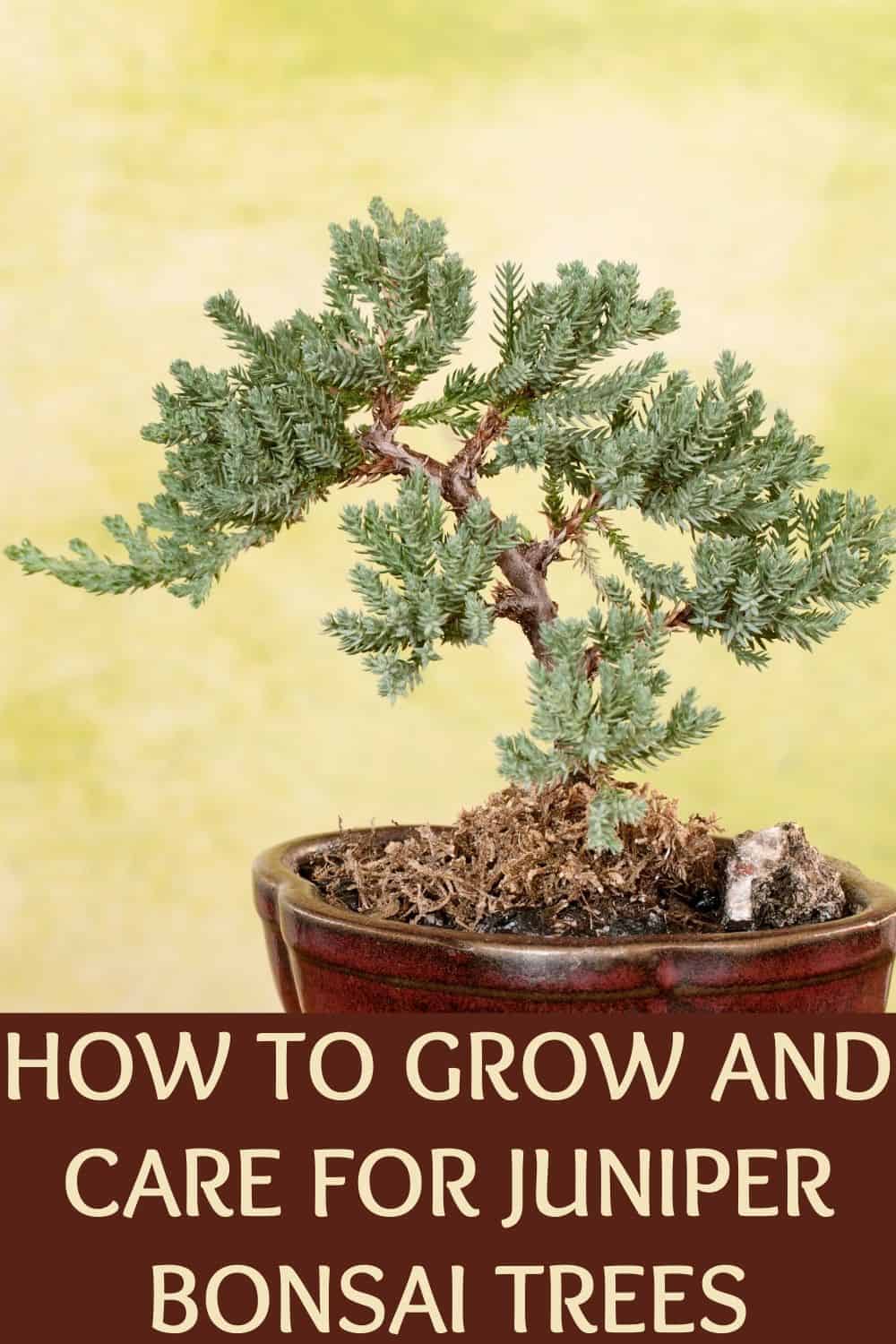

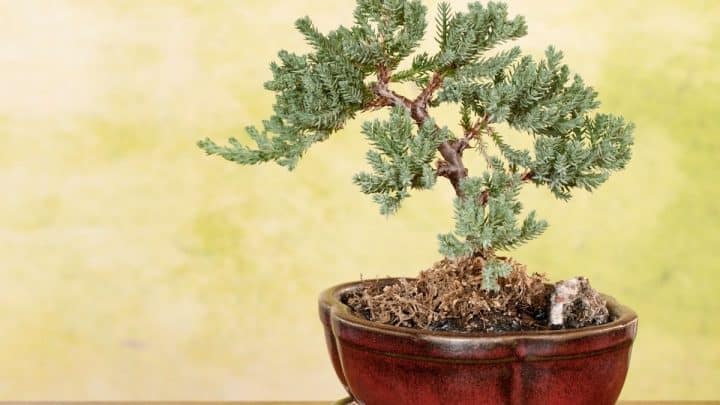





Guide To Growing Outdoor Bonsai Trees
Sunday 3rd of April 2022
[…] but the most popular varieties used for bonsai are maples, pines, and junipers (read our article on how to care for juniper bonsai trees). Bonsai trees are typically grown outdoors, as they require sunlight and fresh air to […]
Flowering Bonsai Trees: The Perfect Addition To Your Home Or Garden
Sunday 13th of March 2022
[…] Juniper bonsai trees are a popular choice because they are easy to care for. The Japanese maple, for example, is an outdoor plant. This deciduous tree can also be an indoor bonsai tree, but it will not grow as large this way, making them great for beautiful bonsai trees. […]